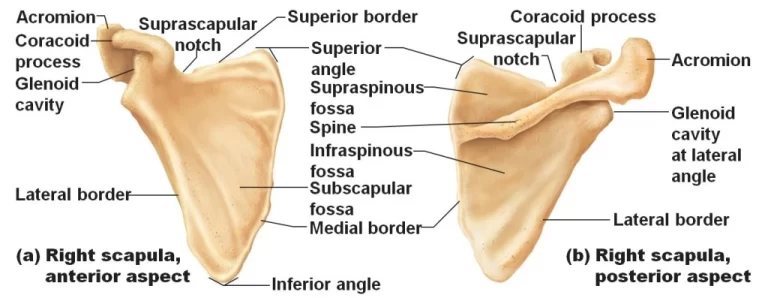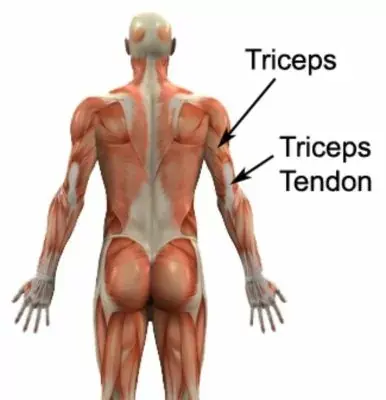Lower Limb Dermatomes
Definition
Lower Limb Dermatomes are skin areas innervated by sensory fibers from a single spinal nerve root. In the lower limb, they originate from the lumbar (L1-L5) and sacral (S1-S5) nerve roots, following a general pattern:
- L1-L3: Groin, upper, and mid-thigh
- L4: Medial leg and ankle
- L5: Lateral leg, dorsum of foot, big toe
- S1: Lateral foot, heel, little toe
- S2-S5: Posterior thigh, calf, and perineal region
These dermatomes are crucial for diagnosing nerve root injuries and neurological conditions affecting the lower limb.
Dermatomes of Lower Limb
- L1–L2: The pubic area, the upper pelvis, the small of the upper back, and the genitalia (the male penises and testicles at birth, and the female vagina).
- L2-L3: Consists of the small middle back muscles, upper thigh, and groin.
- L3-L4: Consists of the patella, the outer edge of the leg just above the knee, the middle of the lower back, and the front and outside of the hamstrings (quadriceps).
- L4–L5: The inner sides of the calf muscles, the patella, the front of the lower leg, and the inside of the foot, which includes the big toe and the second and third toes. Dermatomes of the sacrum and coccyx spine areas on the rear of the legs and buttocks are affected by sacroiliac dermatomes. In the vertebral column, there is only one spinal nerve and one related dermatome.
- S1–S2: The muscles of the middle and outer back of the thigh and the calf, the outside of the ankles, the fourth and fifth toes, and the upper buttocks (including the upper area where the buttocks protrude, the gluteal gap).
- S2–S3: A vertical region in the center of the buttocks that descends through the upper-middle portion of the calf muscles and the inner-middle portion of the back of the thigh. S3 and below: The region that comprises the genitalia, the anus, and the skin space between them (referred to as the perineum) is connected to every spinal nerve from S3 down, including the posterior iliac nerve.
How Can Dermatomes Be Checked?
The process of assessing sensory functions in various skin regions is known as dermatomes. Temperature discrimination (hot vs. cold), light touch with cotton, and the pinprick test (sharp or dull sensation) are some methods you can apply. The patient’s responses in the tested area and the normal area should be compared in order to identify any potential sensory disturbances.
Health Concerns Associated With Dermatomes
Dermatome-related health issues can include a variety of diseases. For instance, in some skin regions, pain, tingling, or numbness may be caused by nerve compression or damage. Spinal stenosis, discs, or illnesses like shingles can all cause the rash. For a proper evaluation and treatment, it is crucial to see a doctor if you suspect a dermatomal issue.
How Do You Use Dermatomes?
Testing for dermatomes requires assessing the sensory capabilities of specific skin regions that receive nerve root supply. This is typically done in order to diagnose nerve issues like compression, damage, or pinching. The location and severity of nerve disease can be better understood by medical professionals by determining the areas where a patient experiences altered sensation, numbness, or pain. The diagnosis of certain neurological disorders, nerve damage, and herniated discs can be found by dermatome testing.
What Role Do Dermatomes Play in Medicine?
Dermatomes play a significant clinical role in the localization and diagnosis of neurological disorders. They assist medical practitioners in pinpointing the precise site of spinal cord nerve compression or damage. Doctors can diagnose conditions like spinal cord injuries, herniated discs, and nerve compression by looking at sensory changes or abnormalities in specific skin areas.
For patients experiencing pain, numbness, or other sensory abnormalities, dermatome testing identifies the type and degree of neurological impairment and directs suitable treatment strategies and interventions.
Why Do Doctors Care About Dermatoses
- Diagnosis: By identifying the affected dermatome, medical professionals can determine the possible cause of a patient’s pain, numbness, tingling, or other sensory abnormalities. This helps in the creation of a suitable treatment plan and a more precise diagnosis.
- Nerve damage: Dermatomes may show compression or damage to the nerves. If the damage is specific, it might be a sign of nerve root compression caused by bony joints, a herniated disc, or another spine structural issue.
- Local symptoms: The symptoms of certain illnesses, like pain and full rashes, are distributed according to a particular dermatomal pattern. Early diagnosis and suitable treatment can be facilitated by recognizing this pattern.
- Neurological Disorders: Dermatomes are useful for assessing neurological conditions like radiculopathy caused by compression of the nerve roots. Dermatome mapping can be used to track the progression of a condition and evaluate how well a treatment is working.
- Anesthesia and Pain: In anesthesia, knowledge of dermatomes is essential for effectively blocking the main area of specific regions during pain or surgical procedures.
- Rehabilitation: Determining the dermatome distribution can aid in the development of focused exercises that enhance muscle strength, coordination, and knowledge in a particular area.
- Spinal cord injuries: The degree and extent of spinal cord injuries are determined in part by dermatomes. The degree of sensory and motor impairment can be affected by dermatomes.
- Clinical Communication: Dermatomes give medical practitioners a consistent method for communicating and recording the location of symptoms or discoveries. For accurate medical information and efficient patient care, this consistency is essential.
What Are The Dermatomes?
Skin regions and dermatomes are primarily innervated by specific spinal nerves. They move in a pattern that matches the distribution of nerves throughout the body. Dermatome maps are available online and in medical textbooks if you want a visual representation. Reliable sources or medical professionals should always be consulted for accurate information.
Diseases And Conditions That Affect The Dermatomes
- Viral infection: Shingles are caused by the human body’s varicella-zoster virus, which is also the virus that causes chickenpox. It typically manifests as an excruciating rash that follows a specific dermatome’s path. Clusters of blisters make up the rash, which can be extremely painful. The dermatomes on the face, chest, and abdomen are most frequently impacted.
- Radiculopathy: This condition is caused by irritation or damage to a nerve root, typically as a result of compression from a bone cap or herniated disc. The particular dermatomal distribution of this nerve may experience pain, numbness, tingling, and weakness as a result. A form of radiculopathy known as sciatica damages the sciatic nerve, causing symptoms to radiate down the legs, buttocks, and lower back.
- Cervical radiculopathy: Pain, tingling, and weakness in the corresponding dermatomes of the hands and arms can result from compression or irritation of nerve roots in the cervical spine (neck).
- Lumbar radiculopathy: This condition, which is similar to cervical radiculopathy, is characterized by the compression or irritation of lower back nerve roots, resulting in symptoms that affect the legs, buttocks, and lower back.
- Damage to the peripheral nerves is known as peripheral neuropathy, though it is not solely dermatomal. In this condition, symptoms like pain, tingling, weakness, and numbness may be experienced. These symptoms could affect different body parts and not always follow a particular dermatomal pattern.
- Complex Regional Pain Syndrome (CRPS): is a chronic pain condition that typically develops following trauma or injury. The extremities and other areas may experience extreme pain, temperature, and color changes in the skin, and swelling that does not necessarily follow a strict dermatomal pattern.
- Diabetic neuropathy: Uncontrolled diabetes can cause diabetic neuropathy, a form of peripheral neuropathy. This frequently results in symptoms like pain, tingling, and numbness in the arms and legs.
Signs and Symptoms of Diseases that Affect Dermatomes
- Numbness and Tingling: Patients may feel tingly or numb in specific skin regions that correspond to the wounded dermatome. Intermittent or continuous, the sensations can range from mild to severe.
- Pain: Localized or radiating pain along a specific dermatome’s path can be caused by conditions like discs or pinched nerves. The pain may be aching, burning, warm, or sharp, depending on what caused it.
- Skin sensitivity changes: Individuals may experience hypersensitivity, decreased sensitivity, or altered perceptions of temperature in the affected area.
- Skin lesions or rash: Herpes zoster, also known as shingles, can result in blisters or a rash along the dermatome, frequently accompanied by pain. The affected dermatome’s particular nerve pathway is followed by the rash.
- Muscle weakness: Disorders affecting the dermatomes can occasionally result in muscle weakness or make it difficult to perform specific movements, particularly if the spinal nerves that regulate muscle activity are injured.
- Radicular pain: Usually caused by nerve irritation or compression, this kind of pain travels along the nerve’s course. From the spine to the outer parts of the body, it is felt along the dermatome.
- Allodynia or hyperalgesia: Allodynia is the experience of feeling pain in response to non-painful stimuli, whereas hyperalgesia is an increased sensitivity to pain. The affected dermatome may experience these sensations.
- Loss of Reflexes: Depending on the level of the spinal cord impacted, nerve compression or damage may cause reflexes to be gone.
- Motor disorders: If the motor nerve fibers are damaged, more severe conditions affecting the spinal nerves may result in paralysis or muscle weakness.
- Abdominal or bowel dysfunction: Issues like fecal or urine incontinence can result from injury to the nerves that regulate these systems.
What Can A Person Do To Avoid Diseases And Problems That Impact The Dermatomes?
- Practice good hygiene: To avoid bacterial and fungal infections that could aggravate the rash, keep your skin clean and dry.
- Sun protection: To lower your risk of skin cancer and other sun-related issues, shield your skin from damaging UV rays by wearing protective clothing and applying sunscreen.
- Healthy diet: To evaluate the condition of your skin, eat a well-balanced diet high in vitamins and antioxidants.
- Drink plenty of water, to keep your skin hydrated and preserve its natural protective layers.
- Avoid smoking: Smoking causes premature aging and reduces blood flow, both of which are detrimental to skin health.
- Handle stress: Stress-reduction techniques can be beneficial because long-term stress can lead to bad skin conditions.
- Take action: Frequent exercise enhances circulation, which supports the general health of the skin.
- Proper clothes and footwear: To prevent pressure, friction, and irritation on specific skin areas, wear appropriate clothes and footwear.
- Avoid harsh products: To prevent irritating or harming your skin, use mild skin care products.
- Frequent checkups: To identify possible issues early, schedule routine skin examinations with a dermatologist.
- Be sanitary in public: Exercise caution when in public areas such as gyms, steam rooms, and swimming pools to prevent skin infections.
- Stay healthy: To get in your body’s natural healing processes, get proper sleep.
FAQs
What do dermatomes mean?
A single spinal nerve supplies certain areas of the skin known as dermatomes.
How many dermatomes are there in the lower limb?
The lower limb contains eight dermatomes.
Which spinal nerves are connected to dermatomes in the lower limbs?
The lower limb dermatomes are mostly supplied by the lumbar and sacral spinal nerves.
Is it possible to mention the spinal nerves that correspond to the lower limb dermatomes?
L1: The first lumbar nerve supplies the upper thigh (L1).
L2: The second lumbar nerve supplies the front of the thigh (L2).
L3: The third lumbar nerve supplies the front of the thigh and knee (L3).
L4: The fourth lumbar nerve supplies blood to the inner lower leg and foot (L4)
L5: The fifth lumbar nerve supplies the upper foot and outer lower leg (L5).
S1: The first sacral nerve supplies blood to the back of the thigh, calf, and outer foot (S1).
S2: The second sacral nerve supplies blood to the back of the leg, buttocks, and thigh (S2).
S3-S5: The third to fifth sacral nerves supply the anus, lower back, and perineum (S3-S5).
In what ways can understanding dermatomes be beneficial?
Dermatomes can assist medical professionals in determining the source of discomfort and in diagnosing the location of nerve-related problems, such as pain or numbness.
Are everyone’s dermatomes the same?
Although there is a broad pattern, the precise borders of dermatomes can vary from person to person.
Is it possible for dermatomes to move from one side of the body to the opposite?
No, dermatomes usually do not cross the body’s midline and are symmetrical.
References
- Solanki, V. (2023, August 22). Lower limb dermatomes – anatomy, how to check dermatomes? Samarpan Physiotherapy Clinic. https://samarpanphysioclinic.com/lower-limb-dermatomes/







